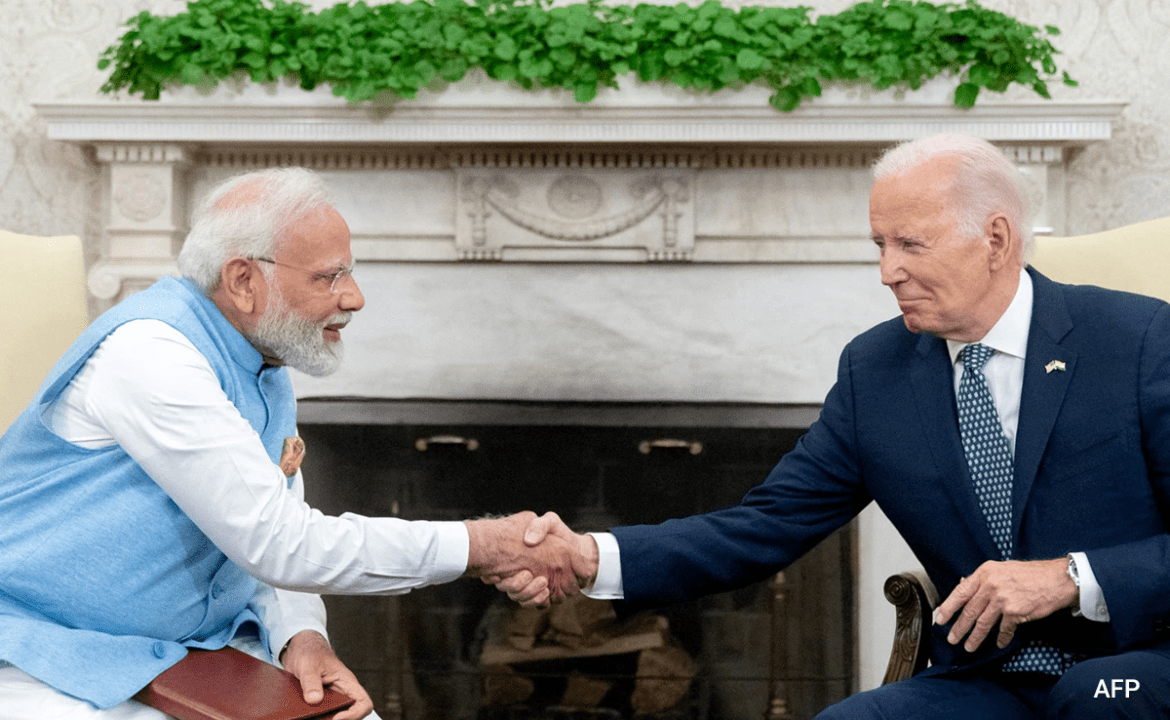AI Generated Summary
- From a dramatic rise in Indian start-ups and deep tech ventures to India’s increasing prominence in the commercial space sector, the synergy between New Delhi and Washington is palpable.
- , a leader in the tech race, and India, an emerging powerhouse, are both equipped with robust, highly-educated workforces, making them formidable partners in the entire innovation lifecycle.
- With India’s investments in new technologies, especially digital infrastructure, serving as a backbone for its journey to become a developed nation by 2047, and the U.
As India and the United States continue to strengthen their ties, a significant opportunity arises: the reshaping of the global technological landscape and the reinvention of 21st-century geopolitics. With the United States-India Initiative on Critical and Emerging Technologies (iCET) fueling the momentum, the upcoming meeting between Indian Prime Minister Narendra Modi and U.S. President Joe Biden in Washington is ripe with potential for further progress.
The primary agenda should be to institute a strategic technology alliance that reinforces mutual support for bolstering cooperation across public and private sectors in both nations. This alliance should strive to foster people-to-people relations, expand secure technology infrastructure worldwide, develop governance protocols for emerging technologies, and collaboratively engage the global south to shape a democratic vision for the future.
In an era of rising techno-authoritarianism and uncertainty, India and the U.S. can leverage their collective democratic strength in the Indo-Pacific region to set a different path. By aligning market forces with their strategic objectives and directing considerable capital towards their ambitions, both nations can ensure widespread access to technological opportunities.
The U.S., a leader in the tech race, and India, an emerging powerhouse, are both equipped with robust, highly-educated workforces, making them formidable partners in the entire innovation lifecycle. From a dramatic rise in Indian start-ups and deep tech ventures to India’s increasing prominence in the commercial space sector, the synergy between New Delhi and Washington is palpable.
Emerging technologies present an enticing opportunity, and both nations seem poised to harness it. With India’s investments in new technologies, especially digital infrastructure, serving as a backbone for its journey to become a developed nation by 2047, and the U.S. increasingly tech-focused public and private sector interests, the stage is set for smart city planning, defense technology transfers, and much more.
The proposed strategic technology partnership will play a pivotal role in optimizing the shared talent pool between the two nations. With 74% of U.S. H1-B visa allotments going to Indians in 2021, Indian employees and Indian American leaders have been instrumental in driving innovation in U.S. tech firms. This partnership can focus on creating opportunities and removing barriers for people-to-people interactions, beginning with addressing U.S. visa backlogs for Indian applicants.
Another priority should be the establishment of programs to fortify investor and entrepreneurial relationships, thereby deepening private enterprise connections. The edtech sector, for instance, presents an opportunity for constructive competition and collaboration.
Furthermore, a strategic technology partnership should invest in expanding the global infrastructure to support the digital world, particularly in the global south. Collaboration could extend from joint research on disruptive technologies to hardware manufacturing and large-scale investments. Ensuring supply chain resilience in the face of increasing geopolitical, health, and climate risks should be a cornerstone of this collaboration.
Both India and the U.S. bring unique digital infrastructure capabilities to the table. India’s leading role in testing Open-Radio Access Networks (O-RAN) as a route to 5G, and the U.S.’s increasing interest in India as a manufacturing location, create a fertile ground for supply chain diversification and resilience.
The proposed partnership should also focus on developing standards and principles that govern future technologies, lowering costs and barriers for tech companies in both countries, and countering competitors operating from authoritarian states. Building on the iCET’s efforts, a strategic partnership could facilitate more private sector collaborations.
Additionally, the partnership must consider the impact of emerging technologies on human rights, national security, and information ecosystems vital for democracy. This is particularly important as both countries head towards elections in 2024. The expansion of digital authoritarianism makes it critical for reliable telecom vendors, operating under the rule of law, to host networks.
Lastly, India and the U.S. should aim to engage the global south in discussions on how technology can enhance shared security, prosperity, and resilience. With India serving as a bridge to the wider global south, a shared U.S.-Indian vision could reach out to nontraditional partners in this crucial geopolitical moment.
A strategic technology partnership between the U.S. and India holds the promise of steering the tech-driven century towards a trajectory that values democratic societies. As technological advancements continue to redefine national security, economic prosperity, and social interactions, a transformational partnership between New Delhi and Washington can ensure these advances are grounded in democratic principles.




